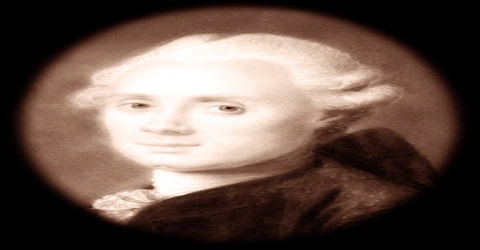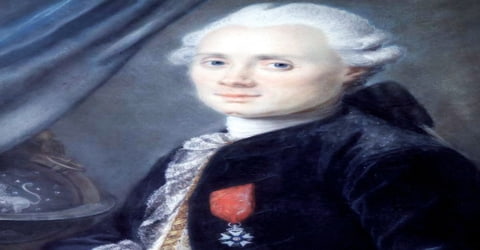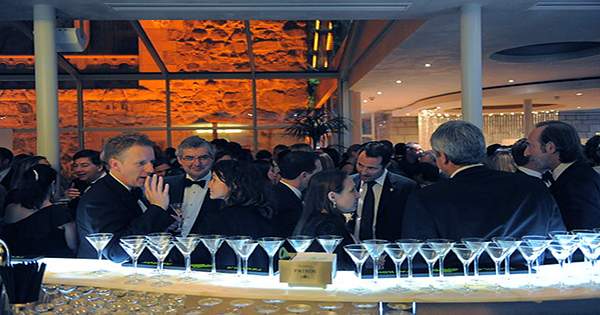Biography of Charles Messier
Charles Messier – A famous astronomer.
Name: Charles Messier
Date of Birth: 26 June 1730
Place of Birth: Badonviller, France
Date of Death: 12 April 1817 (aged 86)
Place of Death: Paris, France
Occupation: Astronomer
Father: Nicolas Messier
Mother: Francoise Grandblaise
Spouse/Ex: Marie-Francoise de Vermauchampt (m. 1770-1772)
Children: Antoine-Charles Messier
Early Life

A French astronomer who was the first to compile a systematic catalog of nebulae and star clusters, Charles Messier was born on 26 June 1730, in Badonviller in the Lorraine region of France, being the tenth of twelve children of Françoise B. Grandblaise and Nicolas Messier, a Court Usher. In Messier’s time, a nebula was a term used to denote any blurry celestial light source.
Beginning his career as a draftsman with a well-known Navy astronomer in Paris, Messier soon became a keen observer on his own. Eventually, he started observing the sky from his master’s observatory, located at the top of the Hôtel de Cluny in downtown Paris with a 100 mm refracting telescope. Thus he was able to observe the sky from the north celestial pole to a declination of about −35.7° and record all objects in that specific area. Although he had discovered many comets, he is best remembered for publishing a list of nebulae and star clusters. However, not all objects on the ‘Messier’s List’ had been discovered by him; some had been previously observed by others. Messier had compiled all of them in the list so that comet hunters could differentiate between the permanent and transient objects in the sky. The objects on the list, designated from M1 to M110, are still being used by astronomers as important references.
Messier was eager to discover as many comets as he could, partially because they were of scientific interest, but he also hoped they would provide him with fame and notoriety. Comets are generally named after their discoverers, as in the most famous case, Halley’s Comet, named for English astronomer Edmund Halley.
Childhood, Family and Educational Life
A noted French astronomer, Charles Messier (French: me.sje), was born on 26th June 1730 in Badonviller, a commune located in the Meurthe-et-Moselle department of northeastern France. At that time, it was a part of the Principality of Salm, an independent state, located between the Duchy of Lorraine and the Kingdom of France. His father, Nicolas Messier, was a court usher in the service of the administration of Salm. He and his wife Françoise B. Grandblaise had twelve offspring; Charles, born tenth, was one of their six surviving children. Among his surviving siblings, three brothers, Hyacinthe, Claude and Nicolas-François were elder to him while another brother named Joseph and a sister named Barbe were younger. He never knew the other six, who died young.
In 1741, Nicolas Messier died and with that, the family’s financial position took a downward turn. Shortly after this, another accident befell the family. Charles Messier, while playing around at home, fell out of the window and broke his thigh bones. By then, twenty-four-year-old Hyacinthe had taken charge of the household. He now took Charles out of school. For the next eight years, he studied with his eldest brother. It was during this period that he developed his sense of observation, which would one day help him to become a renowned astronomer. It is not known when Charles actually became interested in astronomy, but it was probably in 1744. That was the year when a great 6-tailed comet, officially designated as C/1743 X1, appeared in the sky and became visible to naked eye. The young boy was intrigued by it. Then on July 25, 1748, there was an annular solar eclipse partially visible from Badonviller. The incident further stimulated his interest in the discipline. However, it was not until three years later that he had the chance to turn his passion into an occupation.
Thus, as a penniless youth, Charles Messier made his way on foot to Paris where he presented himself to a Parisian astronomer by the name of Delambres. He was hired as a lowly assistant to keep observatory records. Because of his excellent spelling skills and his “neat handwriting,” he was able to get his foot in the door. The job with Delambres led to another position with another astronomer. He learned the science of observational astronomy “on the job,” and his long career as an astronomer had begun.
Personal Life
Charles Messier married Marie-Françoise de Vermauchampt, on November 26, 1770. They had met fifteen years ago at Collége de France. Initially, they put up with the Delisles. But later on 31st October 1771, they set up their home in the Hôtel de Cluny, where the Observatory was located. Their only son, Antoine-Charles, was born on March 15, 1772. Unfortunately, his wife died on March 23, just eight days after giving birth. Three days later, on March 26, the child too passed away.
Towards the end of his life, Charles Messier suffered from decreasing eyesight. In 1815, he had a stroke which left him partially paralyzed. Later he recovered partially, but leading day-to-day life soon became progressively difficult.
Career and Works
In 1751 Charles Messier became a draftsman and recorder of astronomical observations for the noted French astronomer Joseph-Nicolas Delisle. Messier was the first in France to observe the anticipated return of Halley’s Comet in 1758-59, and from that time he became an ardent searcher for new comets. Called the comet ferret by King Louis XV, Messier independently discovered 13 of them and observed many more.
Accordingly, on September 23, 1751, Charles Messier left Badonviller, arriving in Paris on October 2. By then, Delisle had built his own observatory at Cluny and was also attached to the Collége Royal de France at Paris. Charles now began to live in Delisle’s apartment at Collége Royal. His first job was to copy a large map of China. For that, he was assigned space in an unheated large hall at the College. At the same time, he also visited Delisle’s observatory, where he was introduced to the various instruments and was instructed to keep records of his observations.
Charles Messier’s first documented observation was that of the Mercury transit of 6 May 1753, followed by his observations journals at Cluny Hotel and at the French Navy observatories. Thus Messier began his career as a draftsman and a record-keeper but soon turned into a keen observer. His first observation, on Mercury transit, was dated 6 May 1753.
In 1754, Messier was employed as a Depot Clerk of the Navy. Concurrently, he continued to study elementary astronomy with Delisle, who convinced him about the usefulness of measuring exact positions of the observations. Such precise measurement later became the hallmark of his catalog.
In 1755 Delisle, by trading his large collection of books and maps to the French government, received for himself an annuity and for Messier an appointment as a clerk with a salary of 500 francs plus room and board at the observatory in the Hôtel de Cluny. There Messier undertook the series of observations that gradually secured his fame. Sometime in 1757, Messier stared looking for Halley’s Comet, which its discoverer had predicted would reappear in 1758. In the course of this search, he came across a number of fixed diffused celestial objects that looked similar to a comet. The first among them was a dwarfed companion of the Great Andromeda Galaxy.
Then on August 14, 1758, Messier discovered another comet and carefully observed it till November 2, 1758. Unfortunately for him, this comet had already been discovered by De la Nux on May 26, 1758, and hence had been named C/1758 K1 De la Nux. But on August 28, 1758, while he was observing C/1758 K1 De la Nux, he discovered another comet-like patch in Taurus. Since it was not moving he came to the conclusion that it was not a comet, but a nebula. He then started measuring its position, finishing the task by September 12, 1758.
In 1759 the comet predicted by Halley reached perihelion, and in anticipation of the return, Delisle set Messier on a systematic search for the object. Unfortunately, the perturbations from Jupiter were underestimated and Messier surveyed too restricted an area. Finally, he recovered the comet on 21 January 1759, but Delisle demanded strict secrecy. Unknown to French astronomers, Halley’s Comet had already been observed in Saxony; and only after this news reached Paris did Delisle reveal Messier’s discovery. The incorrigible Delisle followed the same procedure with a comet that Messier discovered on 21 January 1760.
Charles Messier’s subsequent obsession with discovering new comets led him to compile a list of astronomical objects which remains one of the most significant documents in the field today. The 110 objects listed in the “Messier Catalog” have been a useful tool and an icon of astronomy for almost three centuries. The Messier Objects are what appear to be fuzzy splotches of light in the deep night sky as seen through the most powerful telescopes of the day. These objects are actually star clusters, distant galaxies (such as the Andromeda Galaxy), and nebulae, or clouds of interstellar gas. What motivated Messier to make a catalog of these objects is the fact that they could easily be mistaken for comets that were still a far distance from earth. Messier was tired of getting the “false alarm” of believing he had spotted a new comet whenever his telescope swept across the night sky and spotted a distant galaxy, cluster, or nebula.
Named Messier 1 or M1, it became the first entry in his catalog. Later, it turned out to be the remnant of the supernova 1054 and is now commonly known as the Crab Nebula. Now Charles Messier had two objectives in front of him. On one hand, he started looking for new comets with his telescope comet-hunting, a new discipline in astronomy, evolved from this and on the other hand, he began compiling his catalog of comet-like nebulous objects.
In 1760 Charles Messier began compiling a list of nebulae so that he could distinguish better between nebulae and comets, which look alike when viewed with a small telescope such as was available to Messier. Many of these nebulae, including some of the most prominent, are still known by his catalog numbers. Messier was elected a foreign member of the Royal Society of London in 1764 and obtained a seat in the Paris Academy of Sciences in 1770.
Messier’s occupation as a comet hunter led him to continually come across fixed diffuse objects in the night sky which could be mistaken for comets. He compiled a list of them, in collaboration with his friend and assistant Pierre Méchain (who may have found at least 20 of the objects), to avoid wasting time sorting them out from the comets they were looking for. The entries are now known to be galaxies (39), planetary nebulae (5), other types of nebulae (7), and star clusters (55). The objects’ Messier designations, from M1 to M110, are still used by professional and amateur astronomers today and their relative brightness makes them popular objects in the amateur astronomical community.
Charles Messier discovered the globular cluster M2, located in the constellation of Aquarius, on September 11, 1760. Although it was previously recorded by Jean-Dominique Maraldi, it was Messier, who first plotted it on a chart. Subsequently, on June 6, 1761, he observed the transit of Venus and the appearance of Saturn’s rings. Then from May to July 1762, he observed Comet 1762 Klinkenberg. Thereafter, he discovered two comets; Comet 1763 (Messier) on September 28, 1763, and Comet 1764 Messier, on January 3, 1764. The year 1764 was also the one when he made his first original discovery. On May 1, Messier discovered a globular cluster, located in the constellation of Canes Venatici and entered it into his catalog as M3. While M1 and M2 had been earlier discovered by others, he was the first discoverer of this cluster. Later in the same year, he cataloged a number of nebulae, naming them from M4 to M40. Among them, nineteen were his original discoveries. The rest had been earlier discovered or cataloged by others. Thereafter Messier discovered M41 in 1765 and Comet 1766 Messier in 1766.
In 1780 Messier added twenty-three new objects, publishing a list of sixty-eight objects in the Connoissance des Temps for 1783. A year later he again augmented his list, to a total of 103, for the Connoissauce des temps for 1784; many of the new nebulae were first found by his colleague P. F. A. Méchain. The two supplements revealed for the first time the remarkable abundance of faint nebulae in the constellations Virgo and Coma Berenices, now recognized as the Virgo cluster of galaxies.
By 1780, his catalog had 80 objects and he published the second version of it in the same year. Later in August, Messier teamed up with Pierre Méchain to catalog more nebulae. The teamwork was quite successful. Early in 1781, he added twenty more objects to his list, taking it up to M100. Later in the same year, he added M101 – M103, all of which were discovered independently by Méchain. The last of Messier’s objects M107 was also discovered by Méchain in 1782.
The final list of Messier objects had grown to 103. On several occasions between 1921 and 1966, astronomers and historians discovered evidence of another seven objects that were observed either by Messier or by Méchain, shortly after the final version was published. These seven objects, M104 through M110, are accepted by astronomers as “official” Messier objects.
By 1794, Charles Messier had lost his Academie pension as well as his naval salary. The navy also stopped paying the rent on his observatory. Pierre Méchain lost not only his estate but also his savings. The duo could not function until 1795, in which year they measured the drawings of M31, M32, and M110. Also in 1795, both Messier and Méchain entered the National Institute of Sciences and Arts, which was actually the successor of the Academy of Sciences. Next, in June 1796, he joined the Bureau of Longitude. His last actual discovery, named Comet 1798 Messier, was made on April 12, 1798. Soon after this, his eyesight began to suffer and so he could not work on his own. Although he did observe the comets in 1805 and 1806, he could not determine their exact position. The Great Comet of 1807 that he reported was also observed with the help of others.
Awards and Honor
In 1764, Charles Messier was made a Fellow of the Royal Society.
In 1769, Messier was elected a foreign member of the Royal Swedish Academy of Sciences. On 30 June 1770, he was elected to the Académie Royale des Sciences, Paris.
In 1806, Messier was awarded the Cross of the Legion of Honor by Napoleon Bonaparte.
Death and Legacy

Charles Messier passed away on April 12, 1817, in his home in Paris. He was then 87 years old. Later on April 14, he was buried in the cemetery of Père Lachaise in Paris.
Charles Messier had independently discovered many comets, he is best remembered for the list of nebulae and star clusters he had compiled over the years. Titled, ‘Catalogue des Nébuleuses et des Amas d’Étoiles’, its first version containing only 45 astronomical objects, was published in 1774. Later in 1780, 35 more objects were added to the catalog, taking the total number of entries to 80. The final list, published in 1781 contained twenty-three more. Much later in the twentieth century, astronomers came across evidence of another seven objects discovered by Messier, but not included in the list. They named them from M101 to M107 and officially included them in the Messier’s List.
Charles Messier was perhaps not a superior theoretician or mathematician, but his observational work earned him enormous respect and a place in astronomical history. A crater on the moon and an asteroid are named in honor of him. In his lifetime, Charles Messier was elected to three of most prestigious scientific organizations in Europe: The British Royal Society, the Royal Swedish Academy of Sciences, and the French Academy of Sciences.
‘Messier’, a lunar impact crater, located on the Mare Fecunditatis of the moon, has been named in his honor. In addition to that, asteroid 7359, discovered at Klet Observatory on January 16, 1996, has also been renamed after him.
Information Source:
















